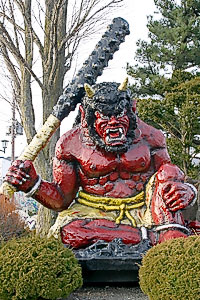Other people have covered the basics of this pretty well, but my $.02 is that yes the DnD numbers were way off, the images even more so. The idea of fighting with something like a 9 lb maul is ludicrous. Next time you are in a hardware store pick one up and try to imagine fighting with it. Anyone who used something like that in a real fight against an even moderately trained or experienced opponent who had a normal weapon like a sword or a spear would be in big trouble.
The mallets used by English archers at Agincourt to subdue disabled French Knights were wood with lead on them, they were used primarily as tools for hammering tent stakes, and I'd eat my socks if they weighed more than 5 or 6 pounds. (by the way, for the guy making fun of the French knights, you might want to look up who won that war...)
Warhammers did exist. A real warhammer is basically something like an ordinary framing hammer on a longer haft and a spike on the other end instead of a nail puller (or alternately, an axe blade on the other end like a tomahawk. They weighed the same as any other hand to hand weapon, i.e. around 2-4 pounds something like that. There is also the poll-hammer, a two handed weapon which was basically the same exact hammer head on a 4' or 5' haft, often with a larger spike for punching through armor or axe blade on the other side.
Real warhammers are very interesting and potent weapons, not to mention painful. Poll Hammers in particular were popular with knights have a whole sections of many martial art manuals devoted to their use. Most non gamers find the idea of fighting with a sledge hammer a little silly - which it is, but it's a well established trope now.
The problem, IMO, is that gamers don't have much experience of weapons, especially back in the earlier days of DnD. They have no idea how lethal a 3 lb hammer on a 24" haft really is, or how they were used etc. (Maybe should watch the Patriot to get an idea). Few game systems have any way to differentiate armor piercing weapons from other kinds of weapons (or how armor really works), or any way to use weapons to disarm or hook shields etc. etc. So to make a hammer special, you imitate Marvel Comics version of Thors Mythical weapon.... and that is what the DnD type giant war-maul actually is, comic book mythology.
The reality is, no matter how strong you are you can't change the laws of physics, there is a sweet spot for the weight of weapons. As pointed out upthread, real great swords weighed around 3-4 lbs, not 15, some really big true two-handers and pole arms got up in the 6 or 7 lbs range, but anything more than that was too slow. Gamers forget in real life nobody has enough hit points to endure being cut with a blade or thrust with a spear, it's not enough to do damage, you have to hurt the other guy
before he hurts you.
As for that Oni, I saw that same show on Spike TV. a lot of fun, but give me a break, many things were way way off especially that thing. The claim that that weapon (a very common type found all over the world including Europe) was 15 let alone 30 lbs which they guy claimed right before they tried it out on that equally silly fake 1" thick iron-banded shield mounted on an inflexible steel bar... I don't know if you noticed the little studs flying off the 'oni' in the slow-mo shot that was pretty amusing. The real historical weapon probably weighed 6-8 lbs at the very most, probably more like half that.
Anyway I'm looking forward to Spartan vs. Ninja tonight

It's also a good point about stainless steel wallhangers, some of those are really dangerous. At least they don't sell the double-bladed swords on Ebay any more.
G.








